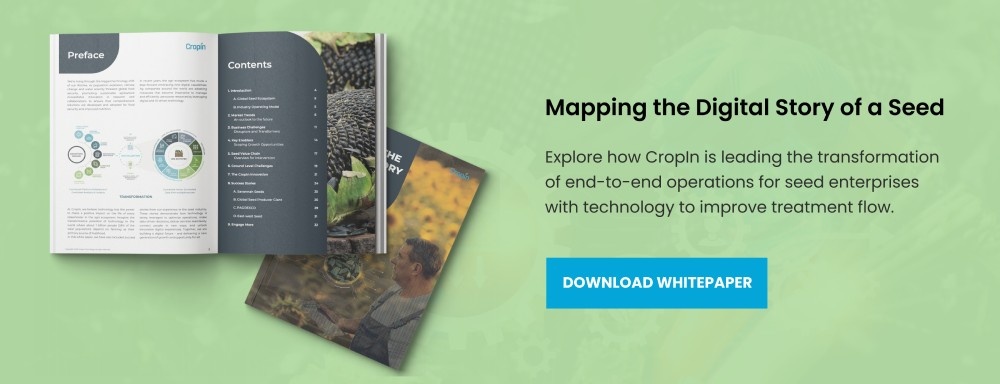Malnutrition has remained a plaguing issue worldwide for decades. It is a prominent cause of diet-related non-communicable diseases in adults and children. Although the United Nations (UN) reports showed a 10% decline in global undernourishment, which is one of the forms of malnutrition, in children under the age of 5 from 1990 to 2015, the figure seems to have escalated post the pandemic-driven crisis in 2020.
The UN aims to curb this crisis with its Sustainable Development Goals (SDG), launched in 2015, through SDG 2: Zero Hunger. The key to reducing the adverse outcomes of hunger is increasing food production, and sustainable farming via CropIn’s digital platform is one of the ways to accomplish it.
To understand how sustainable food production can serve the cause of SDG 2, you need to know its objectives in detail.
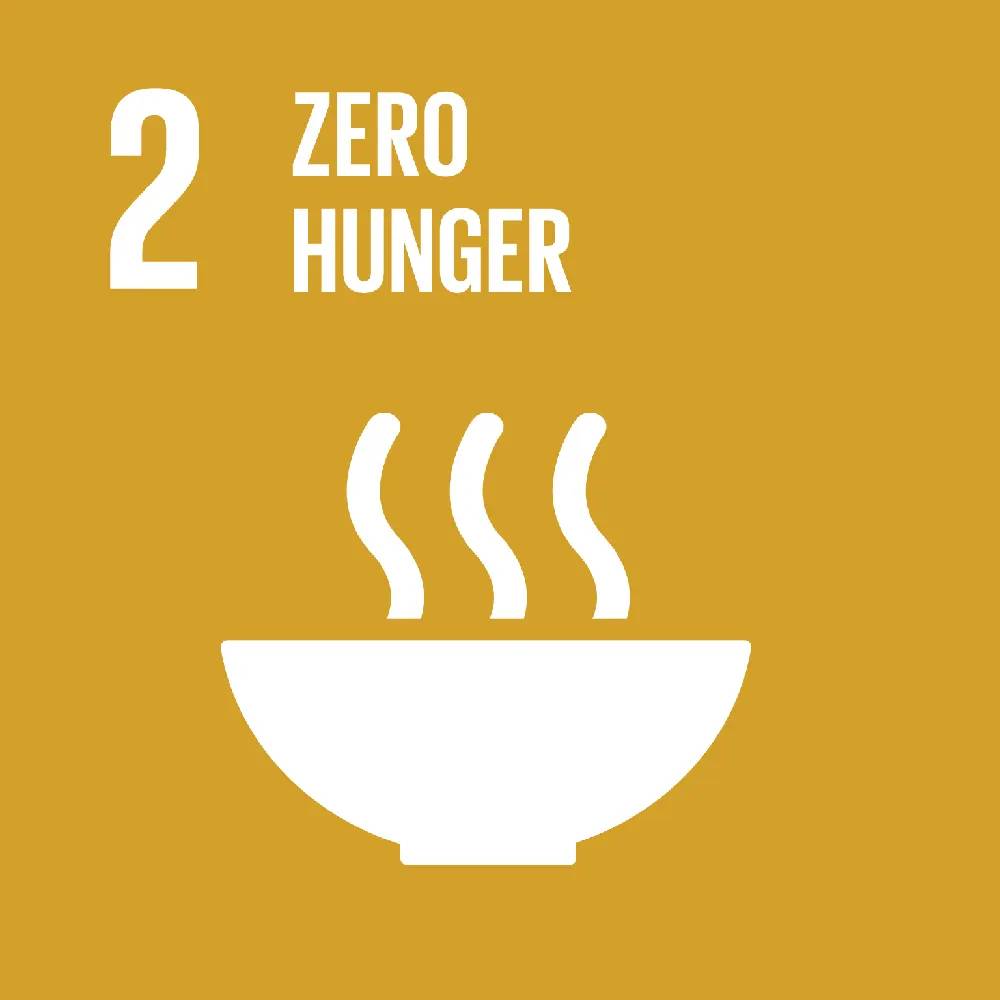
What is the Objective of SDG 2?
Here is a brief overview of what Sustainable Development Goal 2 aims at accomplishing.
End Hunger: The primary cause of worldwide hunger is poverty. Small-scale farmers, especially in under-developed countries, lack of resources and capital to invest in efficient agricultural means for adequate production. The solution here is to improve the farmers’ access to financial services to help them enhance agricultural production. Here, Cropin’s SmartRisk can facilitate financial institutions to lend more confidently to smallholder farmers.
Ensure Food Security: Providing food security means ensuring worldwide access to adequate, safe, and nutritious food for all, especially children and the poor. The primary SDG 2 objective of Zero Hunger by 2030 is self-explanatory in terms of food security. Ensuring food security means assuring the quality of food besides its quantity since the nutrient content of eatables is intrinsic to deciding if it can contribute to a balanced diet. The responsibility of ensuring high-quality agricultural produce is on farmers and associated brands.
Improved Nutrition: According to the UNICEF-WHO-WB Joint Child Malnutrition Estimates , about 38.9 million children aged below five years were overweight, 45.4 million were wasted, and 149.2 million had stunted growth. These health conditions often remain irreversible and are indicators of severe malnutrition, which SDG 2 aims to solve.
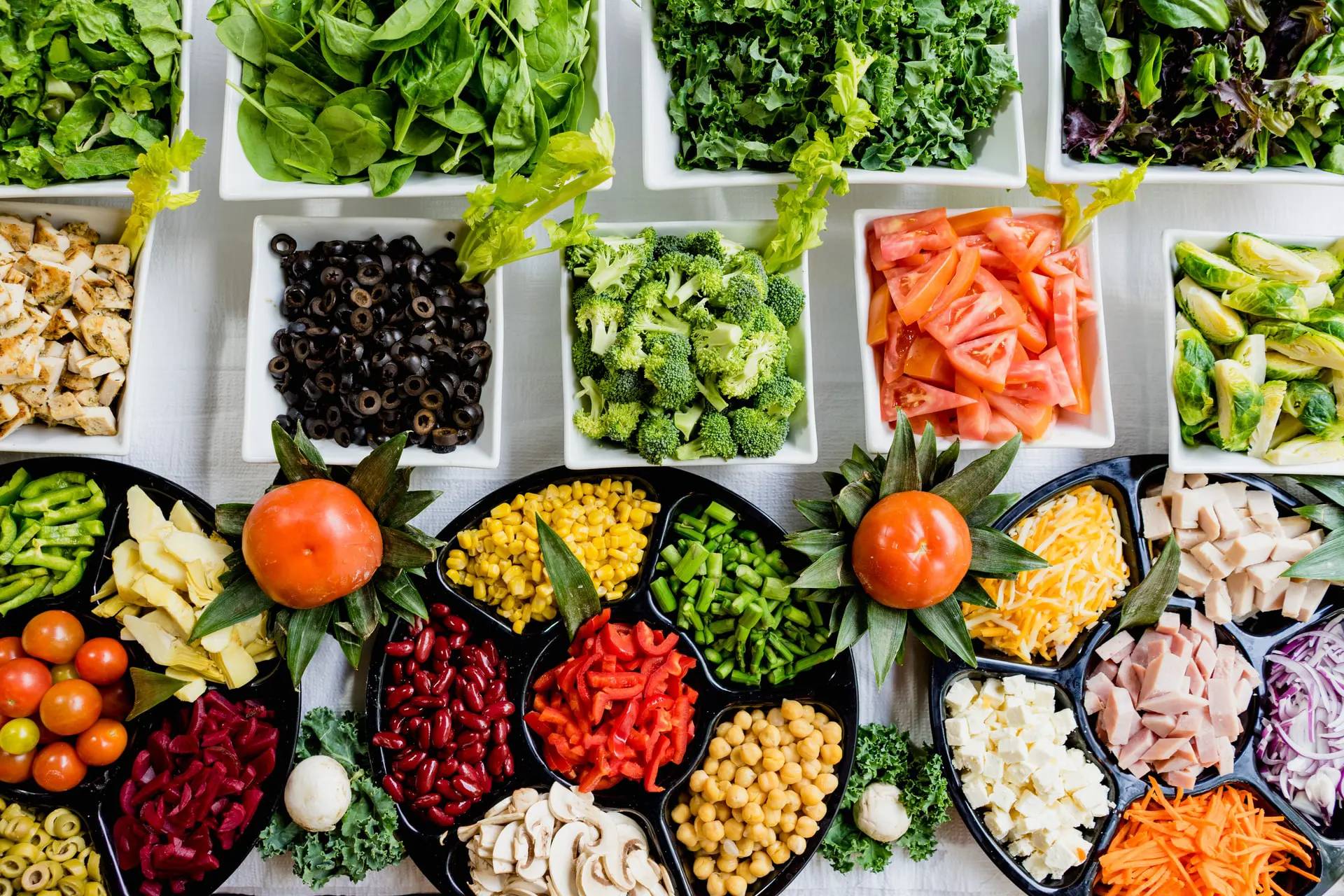
Photo by Dan Gold
Promote Sustainable Agriculture: Unpredictable weather conditions and gradually depleting natural resources are major factors responsible for diminishing agricultural produce. Goal 2 aims to enhance a farm’s resilience to external factors and promote economic means as part of sustainable farming. Sustainability implies the overall betterment of environmental conditions such as soil fertility, freshwater availability, and adaptation to adverse weather conditions.
While this UN initiative aims to eliminate food scarcity by 2030, the current state of agriculture and rate of food production suggests otherwise. According to DownToEarth, food production must increase by around 60% to ensure food security. For this, speedy adoption of SDG for agriculture is the need of the hour.
Digitizing farming techniques via Cropin’s products is one of the ways to attain sustainability. Here’s how.
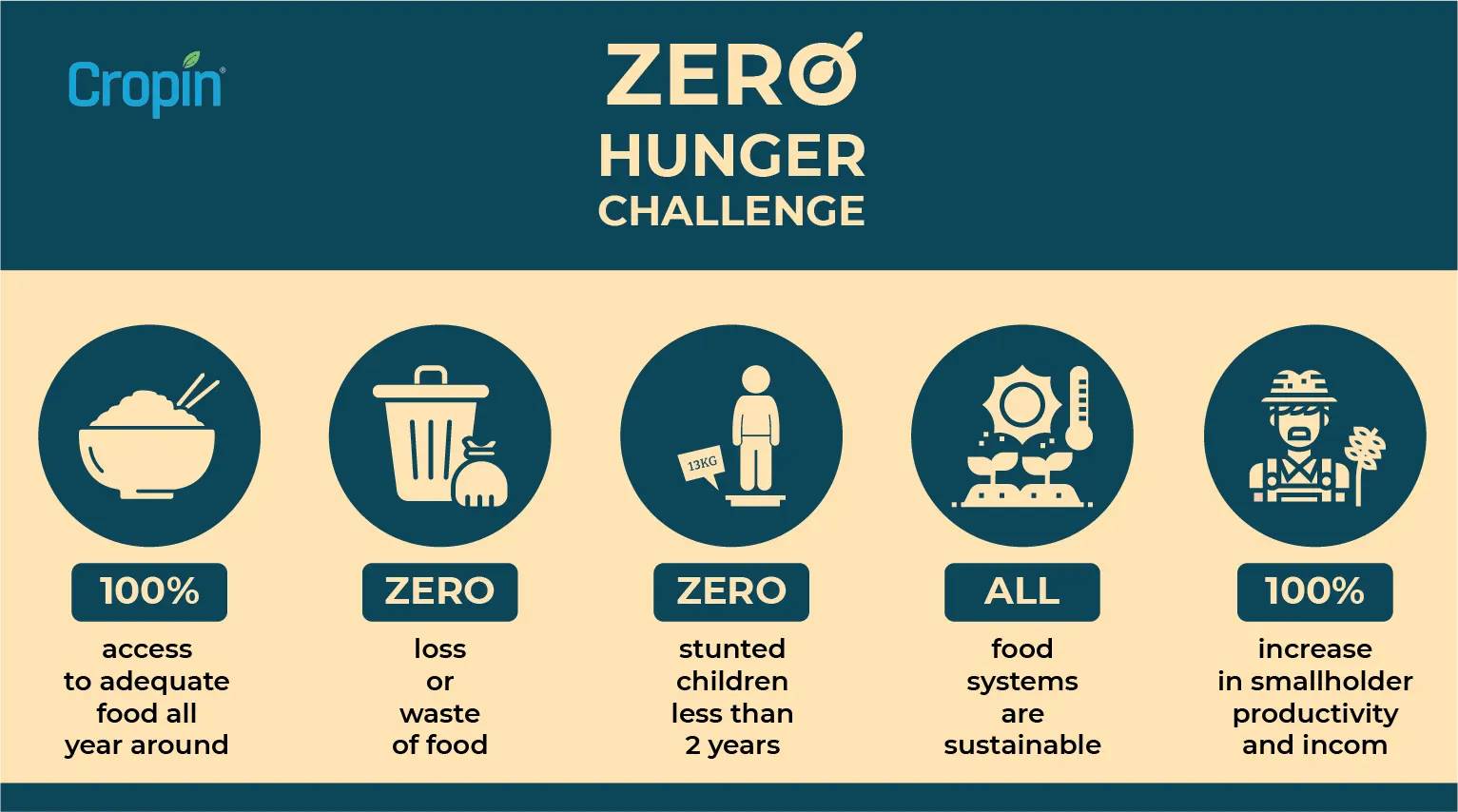
How Does Cropin Help Improve Farmer Livelihoods to Achieve Sustainable Development Goal 2 Targets?
Cropin offers a tech-enabled platform to help small farm holders attain climate-smart and efficient farming techniques. Consequently, business owners can align their agricultural operations to help farmers improve agricultural productivity and their income using digital solutions in the following ways:
- Real-time Communication with Farmers: Cropin’s AcreSquare facilitates real-time communication between agribusinesses and farmers. It helps enterprises guide farmers to realize sustainable farming with training, advisories, and other informative content. Agri-input companies can engage with farmers to provide appropriate information and updates on their products enabling them to achieve optimum output.
- Ensuring Quality Compliance: SmartWare facilitates companies to monitor their supply chains closely. The information recorded at each stage increases transparency and allows them to apply for certifications with ease. Further, SmartWare streamlines inventory management, enabling businesses to reduce post-harvest losses. As a result, food companies can ensure that customers receive only the best nutrient-rich items.
- Strengthen Relationship with Customers: Health enthusiasts are most likely to look for the credibility of the quality of food they are consuming. In that case, agribusinesses can opt for RootTrace to help end-consumers track the product’s composition right to the point of its origin with the help of scannable codes. Traceability builds trust amongst the consumers, which in turn leads to higher revenues for the brand.
CropIn’s Platform Acts as Knowledge Repositories
Besides benefitting food companies with global enterprise-grade solutions, CropIn also aids the cause of UN’s SDG of sustainable farming in the following ways.
- Constant Monitoring and Updates on Farm Activities: Farming companies can access near-real-time updates on crop conditions, weather forecasts, and alerts on possible threats via SmartRisk . The deep-learning powered platform uses satellite imaging and proprietary AI/ML algorithms to provide predictive analysis based on historical data of cropping patterns. Accordingly, it gives farmers an estimate of current crop health and yield estimates and helps them plan for post-harvest processes efficiently.
- Customising Farm Management Plans: SmartFarm uses data from farms, satellites and IoT devices for 360-degree farm mapping and monitoring. By digitising individual plots, farming companies can configure crop-specific activity plans and packages of practices (PoP) and assist farmers with timely advisories to maximise the yield. Farmers can achieve sustainable farming by following advisories on ideal sowing time based on weather forecasts, optimised agrochemical usage for minimal wastage, and irrigation scheduling to conserve water.
- Facilitating Access to Timely and Adequate Credit: SmartRisk also solves the capital shortage of small farm-owners by establishing a link between farmers and suitable lending parties. It solves the most prevalent problem that farm-owners face, i.e., difficulty in getting credit approval. These lending institutions can perform effective credit risk assessments based on CropIn’s satellite-imaging based analytics. The ease of credit processing using alternate agri-data and risk monitoring after loan disbursal also reduces operational costs considerably.
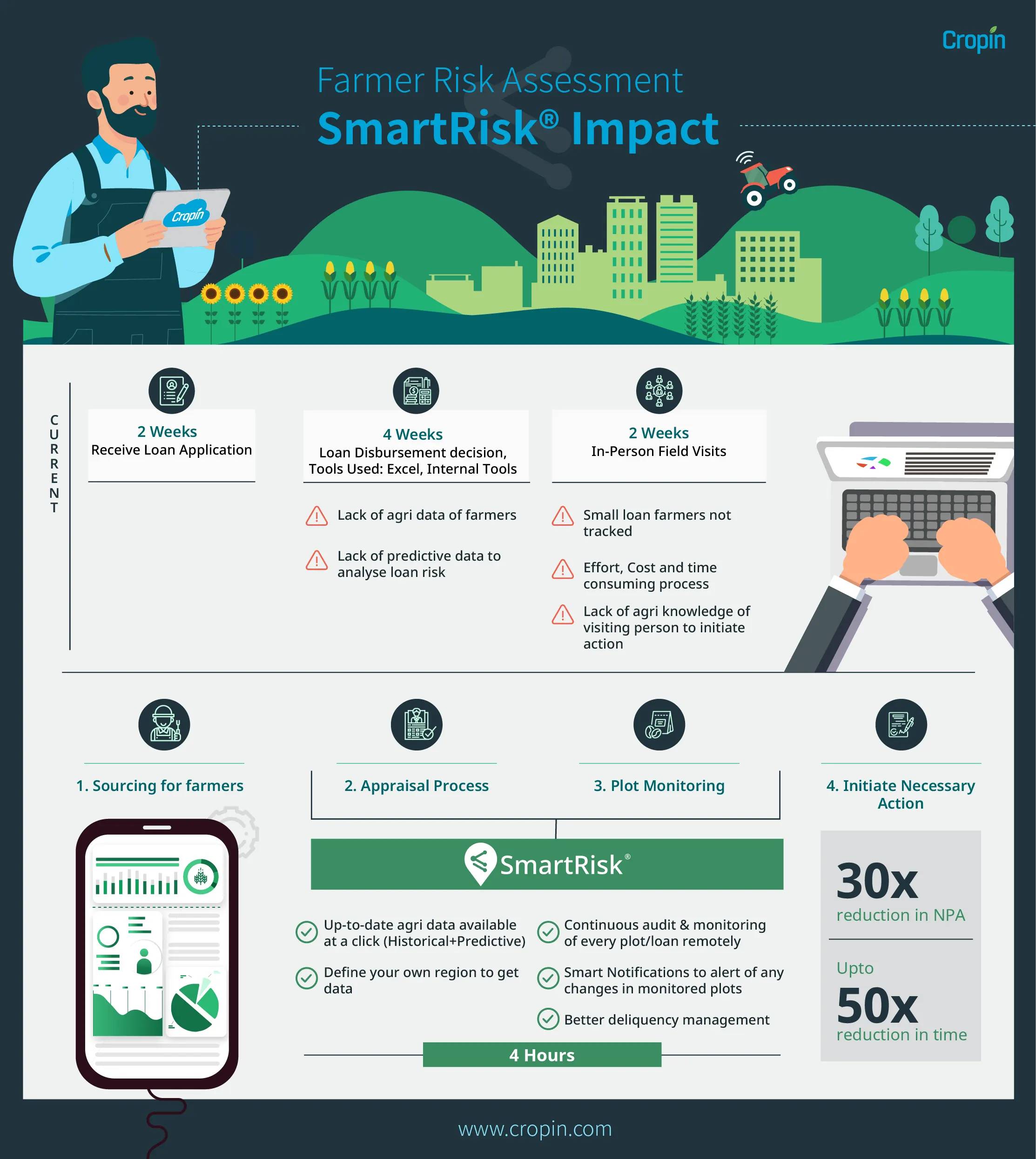
The mentioned offerings of CropIn can help farming companies meet sustainable farming goals while producing healthy and nutritious food with minimal resources and expenses. All of this adds up perfectly to align with the UN’s SDG 2 guidelines, making digital farming probably the most effective solution for world hunger eradication.






